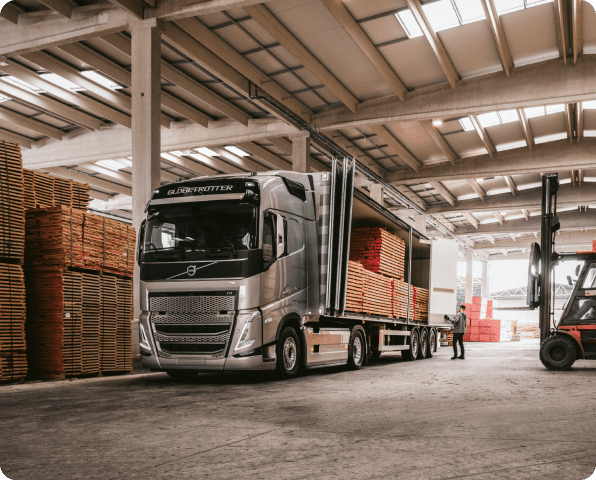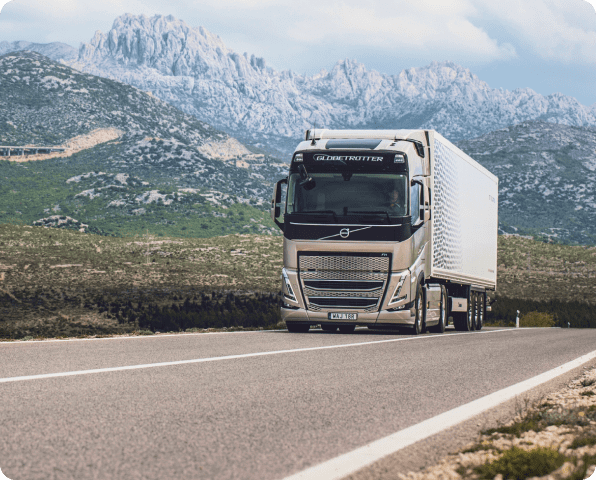LTL Shipping Services
Less-than-truckload (LTL) shipping means transporting goods that don’t need a full truckload. Learn more about our comprehensive LTL shipping service.
Why choose Spotos LTL shipping service?
Network
Our users can access thousands of live loads and see which vehicles are available for LTL. There are over 70k trucks to choose from.
Insurance
LTL can be good for delicate packages because they remain in the same truck from pick-up to unloading. Staying in the same vehicle all the time might decrease the odds of damage, but we’re still not convinced.
Eliminate Bureaucracy
With features like digital freight document management and integrated carrier payments, Spotos can help you significantly reduce the amount of manual administrative work required.
How does less-than-truckload shipping work?
Shippers use an LTL freight service to avoid waiting until their customers place enough orders to fill an entire truck. With LTL shipment, you can send as many goods as you wish, whenever you want. Such freight shipments will save you time, money, and energy.
What is less than a truckload?
Full truckload (FTL) shipping is when a shipment takes up a whole truck by itself. The transportation of freight that doesn’t use the entire space of a truck is known as less-than-truckload (LTL) freight shipping. Several shippers share space on the same truck and pay only for their part of the trailer space.
Standard guidelines for LTL freight say that a single shipment is between 45 and 4,500 kilograms. Besides, a typical load shouldn’t contain more than six pallets in size.
The flexibility of paying only for the space your items occupy in a truck makes LTL a perfect fit for SMEs. Consider LTL freight if you don’t ship in large quantities. It works great when looking for a budget-friendly solution.

Advantages of LTL over FTL
- LTL is more cost-effective. It allows transporting smaller shipments without paying for an entire vehicle.
- LTL offers flexibility for small and medium-sized businesses to meet changing demands.
- When you use LTL freight, you save space in warehouses. As you can send more shipments, you won’t need to stockpile many products simultaneously.
- Sharing space with other shipments significantly reduces your company’s carbon footprint. Keep our planet healthier!
- With less-than-truckload shipping, you won’t have to wait for customers to place enough orders to fill an entire vehicle. You can ship items earlier.

How is the LTL price calculated?
FTL rates are calculated on a per-mile rate plus a fuel charge, so they don’t fluctuate much. LTL freight rates are different.
More factors play a significant role in determining the cost of your shipment. The most common ones are as follows:
- Weight. The heavier the shipment, the higher the price – as simple as that
- Class of freight. Value, liability, stow-ability, handling, and product density define a class of freight
- Density. It is the space a shipment takes in relation to its weight
- Base rates. They’re quoted per 45 kg (CWT) based on the items’ volume, demand, and gross cost of the items
- Distance. The longer the distance, the higher the price – again, as simple as that
Freight All Kinds (FAK). Tariff classification for different goods combined and shipped at one freight rate

Less-than-truckload shipping process
LTL freight occupies an entire vehicle by itself. Thus, LTL shipping is often believed to be more accessible. The Spotos less-than-a-truckload shipping process is simple and user-friendly.
A safe and effective way to ship LTL freights in Europe
At Spotos, we've completely revolutionized the way businesses handle freight shipping. Our engine gives shippers, carriers and drivers unprecedented control over their operations to cut out dead millage, save time and significantly reduce costs in the process.
Get startedPricing
Are you looking for a reasonable price? Then, check on our platform with a few clicks.
Smart price
- The auction rate is a dynamic pricing algorithm
- Price increases nearby the delivery date
- Define budget interval by yourself
- Spotos offers the optimal rate
- Pay only the lowest rate picked by the carrier
Fixed pricing
- A fixed rate is our pricing option which guarantees your freight delivery by 100%, and normally it is more expensive.
Frequently Asked Questions
Rates for LTL freight shipments vary based on several factors. These include the weight, class, density of your freight, distance, base rates, etc. Sing up on our system to get the exact rates in a fraction of a second.
Spotos doesn’t provide its vehicles or transport services. But we let users search our marketplace. There, you can dive into an ocean of different types of vehicles available for booking.
Typical LTL is used for shipments that weigh up to 2,500 kg. These numbers might vary depending on parcel service carriers.
In the main, less-than-truckload shipments are between one and six pallets.
Less-than-truckload, or less than load (LTL), shipments are smaller. They don’t fill an entire truck so leave space for other small shipments. Full truckload (FTL) shipments tend to be much larger. They fill the biggest part of (or the whole) vehicle.
Anything that doesn’t need the use of a whole trailer. For example, your shipment of toothbrushes might only take up 20% of the truck’s space. So, you would choose LTL shipping to share the space and the cost with those whose shipments are also small. Examples include 25 boxes of bubble gum, 20 items of clothing, 15 backpacks, etc.
No, it doesn’t. Yet, you can add insurance to your freight before finalizing your deal or signing a contract.